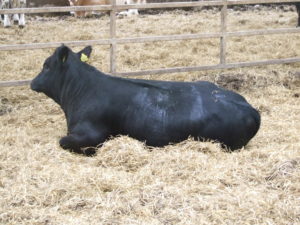Targeting Use Of Limited Straw Bedding
18 October 2017 The lower the amount of straw bedding used –
The lower the amount of straw bedding used –
- The wetter the bedding, the higher the relative humidity, the longer survival time and hence the higher concentration of respiratory organisms in the atmosphere so the greater the risk of pneumonia.
- The wetter and dirty the bedding, the wetter and dirtier the coat of the animal becomes. This would possibly be a benefit to large well fed cattle in allowing them to lose more heat. However in cattle on restricted rations and in particularly smaller animals eg calves/lambs, etc the consequences could be severe.
- The dirtier the bedding the greater the contact animals will have with diseases carried in dung and urine. This risk is greatest for young animals eg scour, navel ill, Johne’s, etc.
These factors can help us prioritise bedding for different groups of stock eg:–
- Young stock who must have a clean, dry lie to help maintain their body temperature and minimise diseases such as scour etc. This can be efficiently achieved by providing a well bedded creep/refuge area. The cows/ewes can be less well bedded (unless Johne’s is a major problem). This can simply be achieved by moving cows out into a group of calved animals, with a refuge, 24 hours after they have calved.
- Heavily pregnant animals with 2 weeks of calving so their teats are clean when their offspring first suckle. “Dirt” in colostrum reduces the proportion of critical antibodies which are absorbed from colostrum.
- Finishing cattle within 4 weeks of slaughter. The priority here is to minimise the need for belly clipping.
- The same principles apply to autumn calving cows but with the priority for the calves gradually declining as the winter progresses and they get older/bigger.
- Store cattle will have the lowest priority
Basil Lowman, basil.lowman@sac.co.uk
Sign up to the FAS newsletter
Receive updates on news, events and publications from Scotland’s Farm Advisory Service
